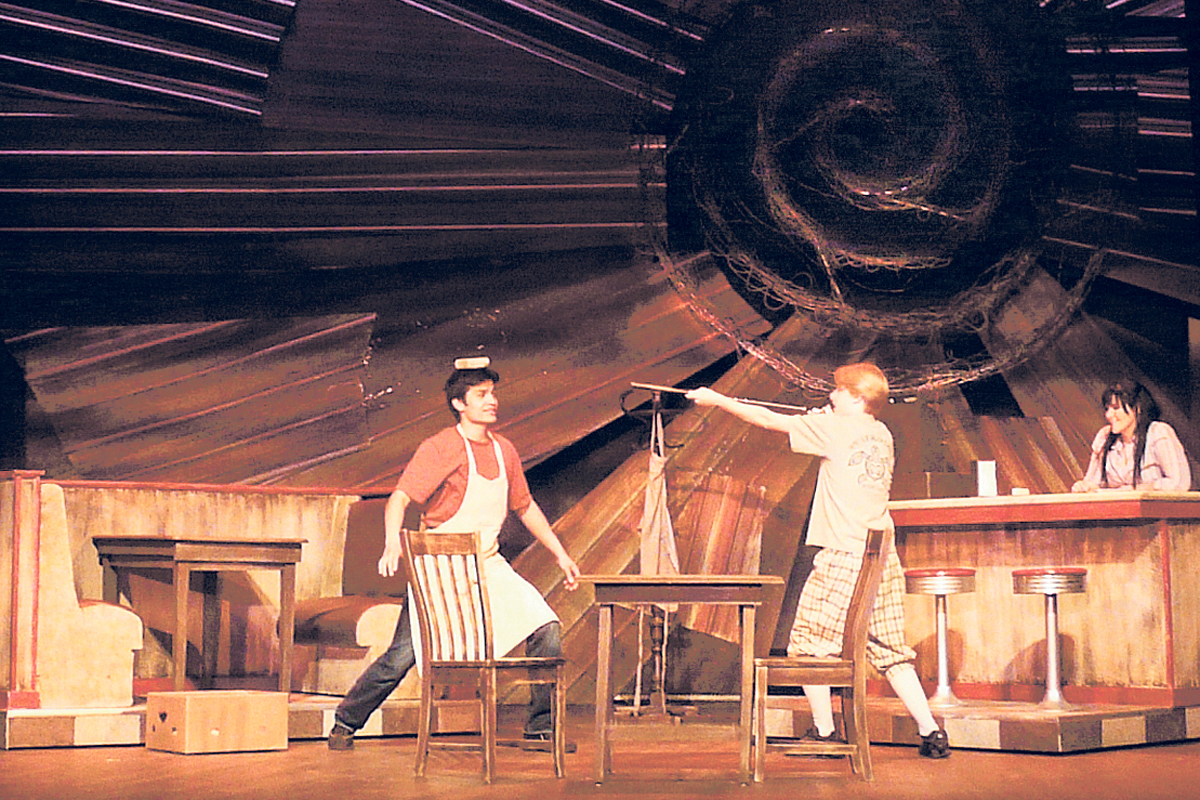Theater students head to Washington
In “farm country” it may seem odd that USU theater design students are raking in awards for their sets and costumes for the fourth-straight year. But Shawn Fisher, professor of theater design, said location does not necessarily define the success of theater arts.
Graduate and undergraduate students take their designs to the regional Kennedy Center American College Theater Festival (KCACTF) every year, and in this year’s mid-February festival, USU students won two national and three regional awards against the design projects of approximately 100 college that attended. The winners – Brandee Jenks, Caroline Kennedy, Molly Hill, Milinda Weeks and Andrea Lyman – took their awards in set design, costume and make-up for productions that have appeared in the Fine Arts Center.
“I think that our students are just getting really, really good training,” said Adrienne Moore, USU professor of directing and voice, “and not only do (the students) have design skills, they know how to apply these skills in a real world situation.”
Moore also believes USU theater students’ success could be attributed to the requirement that they have to produce 24 design projects in their coursework.
“It’s not like winning a Tony Award,” Fisher said, “but (the students) get to see how they stand up against people they’ll be competing against in their careers.”
Brandee Jenks’ “functional” set design for the USU production “Do Not Hit Golf Balls Into Mexico” will travel to Washington, D.C., in April to hopefully receive a national award, Jenks said. This will be her second year as a contender in the KCACTF national competition. She combined visual elements of corrugated fields, mesh material and a barbed wire sun to set the mood of the play that took place in the area of the Mexican-American border.
“There wasn’t a whole lot to it, but I did that on purpose because I thought the words of the play needed to be the focus,” Jenks said. “It was everything it needed to be and nothing that it didn’t need to be.”
The set design for “Do Not Hit Golf Balls Into Mexico” catered to the mood and issues that were present in the production, Moore said, and the visual aspects were “evocative.”
Jenks said Fisher encouraged her at last year’s national competition to go with her sights set on more than an award, but look at the other projects and learn from her competition.
“We hold them to high standards,” Fisher said, “and we very much value the process of becoming a diverse artist. We don’t look at designers as servers of the production and we value their creative part. It helps to drive their work.”
Molly Hill will also travel to Washington, D.C., to show off her “Seussical the Musical” makeup design. She said she believes her design was successful at the regional KCACTF competition because of the labor that was required for the project and the professional manner in which she displayed her work.
The labor Hill needed to execute for this project involved shaping more than 20 wigs with glue and curling rollers, she said. Some other elements of makeup included colorful eyelashes for the birds in the play and ‘60s-inspired face makeup for the actresses.
“From the beginning we wanted them to be humans with animal-like characteristics,” Hill said.
“The Zebra, instead of having a mane, had a ponytail that was spiked. We did that with every one of the characters.”
In the regional KCACTF competition there are five design categories: set, makeup, sound, lights and costume, Fisher said. A regional and national award are given for each category, so USU students claimed half of the total major awards distributed.
There is a good balance in USU’s theater faculty, Fisher said, which is helpful to the students because they are able to get various design perspectives.
“What this achievement really says is that the location of Utah State – it’s not in a major city and is in a less populated state – really comes down to the quality of students entering the program,” Moore said, “and Craig Jessop is set on creating a national appearance for Utah State in the national arts.”
– catherine.meidell@aggiemail.usu.edu

